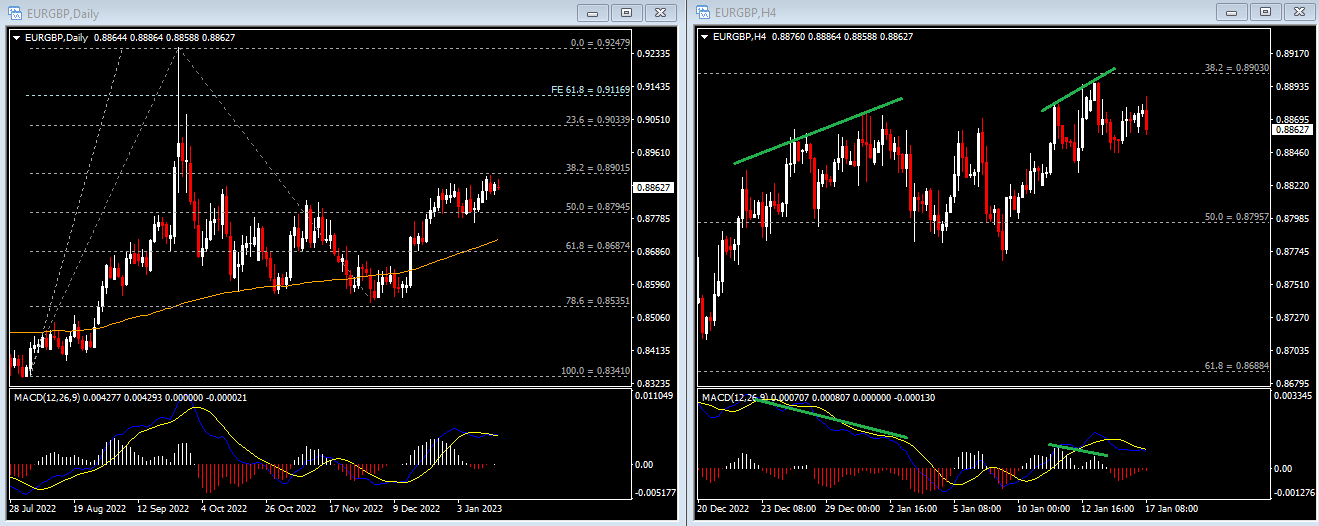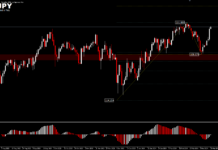In today’s European session, Germany’s final CPI rate for December registered 8.6% on an annual basis, in line with market expectations and the previous value. The final monthly rate was negative for the second consecutive month, at -0.8%, in line with market expectations. The annual and final monthly CPI rates, after reconciliation, were recorded at 9.6% (down for the third consecutive month) and -1.2% (in negative territory again since November 2020) in December, unchanged from market expectations and the previous value.
The German Federal Statistical Office noted that food and non-alcoholic beverages saw the largest price increase at 19.8%, but down from 19.9% in the previous month; the figure was recorded at 5.9% year-on-year last year. Prices for housing, water, electricity, gas and other fuels followed with a 9.3% increase, down from 13.5% in the previous month; the figure was 3.7% year-on-year. Prices of alcoholic beverages and tobacco rose by 7.5%, compared to 6.7% last month, and 3.6% year-on-year. Finally, clothing and footwear prices recorded a 7.5% increase compared to 6.7% in November; this figure was 3.6% compared to last year.

Overall, German inflation has shown signs of easing. The ECB raised rates by 50 basis points at its last meeting last year, pushing the deposit facility to 2%, the refinancing rate to 2.5% and the marginal lending rate to 2.75%, levels not seen in 14 years. This year, the central bank committee expects to raise interest rates at a “significant” and sustained pace, with inflation expected to average 6.3% in 2023, compared to their medium-term target of 2%. However, policymaker De Cos also highlighted “exceptional uncertainties”, including the energy crisis, weakening economic activity and tighter financing conditions. In light of this, the central bank is not optimistic about the outlook for growth in the eurozone this year, which is expected to register only 0.5%, followed by 1.9% in 2024 and 1.8% in 2025.

The UK’s three-month ILO unemployment rate remained unchanged at 3.7% in November, in line with market expectations. in December, the country’s unemployment rate increased moderately to 4%, compared to 3.9% previously. On the other hand, UK unemployment claims recorded 19,700 in December, compared to 30,500 previously. Also, average wages excluding bonuses recorded 6.4% year-on-year in the three months of November, slightly above market expectations of 6.3% and the previous 6.1%. Regardless, total payrolls still slipped by -2.7% when adjusted for inflation, while average real wages excluding bonuses fell by -2.4% year-on-year in November, the 13th consecutive monthly decline and the lowest rate of decline in eight months. Uncertainty is expected to continue to erode the labour market. Earlier, UK job vacancies fell by 75,000 to 1,161,000, reflecting the uncertainty that is dampening hiring across all sectors.
Technical analysis:
The daily chart shows the EURGBP back above the 100-day SMA again since 15 December last year. Currently, the FR 50.0% (or 0.8795) that extends from the August 2022 low to the September high of the same year is near-term support. It is worth noting that the 4-hour chart showed a signal of negative MACD mean divergence in the fourth quarter of last year, but the shorts failed as price rebounded with support. In the near term, 0.89 (or FR 38.2%) could be a strong resistance area, with the MACD bars showing negative divergence. A valid sell-off would push the currency pair lower and test 0.8795 (FR 50.0%), followed by secondary support at 0.8750, and 0.8690 (FR 61.8%). Alternatively, if the shorts are weak and the exchange rate rises above 0.89, the high of 29 September last year (0.8978) will be the next resistance, followed by 0.9035 (FR 23.6%).
Click here to access our Economic Calendar
Larince Zhang
Market Analyst
Disclaimer: This material is provided as a general marketing communication for information purposes only and does not constitute an independent investment research. Nothing in this communication contains, or should be considered as containing, an investment advice or an investment recommendation or a solicitation for the purpose of buying or selling of any financial instrument. All information provided is gathered from reputable sources and any information containing an indication of past performance is not a guarantee or reliable indicator of future performance. Users acknowledge that any investment in Leveraged Products is characterized by a certain degree of uncertainty and that any investment of this nature involves a high level of risk for which the users are solely responsible and liable. We assume no liability for any loss arising from any investment made based on the information provided in this communication. This communication must not be reproduced or further distributed without our prior written permission.




















